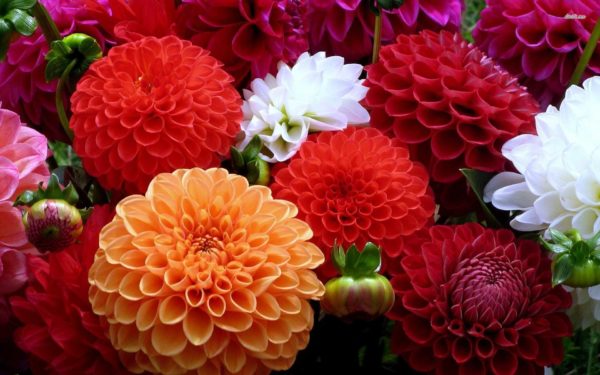
Representatives of the Asteraceae family. More than 15 thousand plant varieties are known. Allocate wild and the most common garden. Perennial plants with tuberous rhizomes, straight hollow stems from 30 to 250 cm high. The leaves are pinnate, usually dark green, sometimes purple. Inflorescences are a basket with a diameter of 3 cm. The aerial part of the plant dies above the ground to the root neck. Dahlia does not winter in the open ground, the tubers are dug up after the first frost and stored in a dry, ventilated room.
The plant is warm and photophilous, loves good air circulation. Soil loves loose, rich in humus. On sandy soil they grow well too. Lowland and wetland areas are not suitable for their cultivation. Bloom from late July to autumn. Among the shortcomings, it can be noted that dahlias are afraid of strong winds, waterlogged soils.
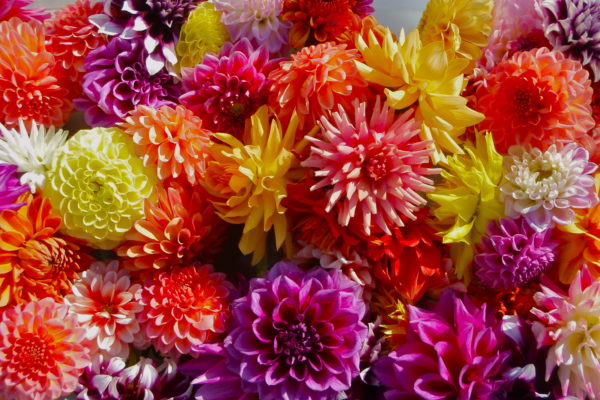
Application Dahlia
For single compositions, large-flowered or abundantly blooming dahlia varieties are suitable; low-growing varieties are suitable for rabbits and borders. Almost all varieties of dahlias are suitable for compositions and bouquets.
Classifications of Dali.
First of all, flowers vary in height:
- dwarf - bush height up to 60 cm;
- undersized - up to 80 cm;
- medium-sized - up to 120 cm;
- tall - from 120 -150 cm;
- giant - above 150 cm.
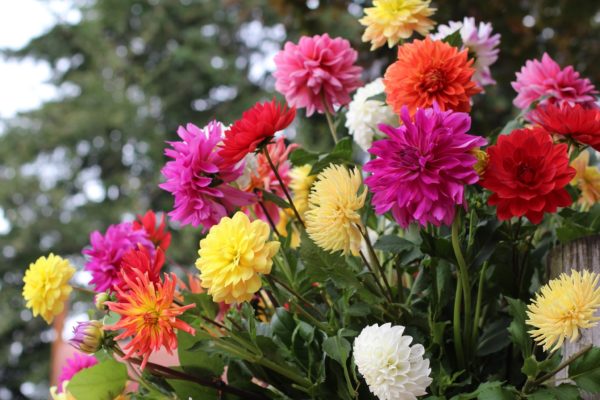
Varieties of dahlia on inflorescences and color:
- Single row.Low plants with non-double inflorescences with one row of marginal flowers. Happy Kiss is the brightest representative. The flowers of bright orange color reach 10 cm.
- Anemone. Short, semi-double, with one or more rows of edge flowers. The name received for their similarity with anemones. Very popular variety.
- Blue bayou - their basket reaches 10-15 cm. Reed flowers are lilac, and tubular ones are purple.
- Asahi Chohi has tubular flowers of white and yellow. White with red stripes along the edge is the only row of reeds.
- Brio - petals of various shades, undersized.
- Honey - belong to undersized, have a yellow center and dark pink color of the outer circle of the petals.

- Collar collar. This is a combination of colors and the original form of inflorescences. The collar itself consists of twisted petals.
- Knight Butterfly - an indescribable beauty of a flower. It has a yellow center, a white collar and maroon flowers.
- Alpen Mary Lloyd - a combination of various shades of raspberry color.
- Impressive fantastic - the middle is yellow, the outer row of petals is red, and the collar is red and white.
- Fashion Monger - reed petals of red - violet hue are pointed, white at the edges.
- Flamenco - bright red outer petals, light yellow collar.
- Nymphaeous. One of the most beautifully growing groups. Terry inflorescences up to 20 cm, consist of 7 rows of petals.
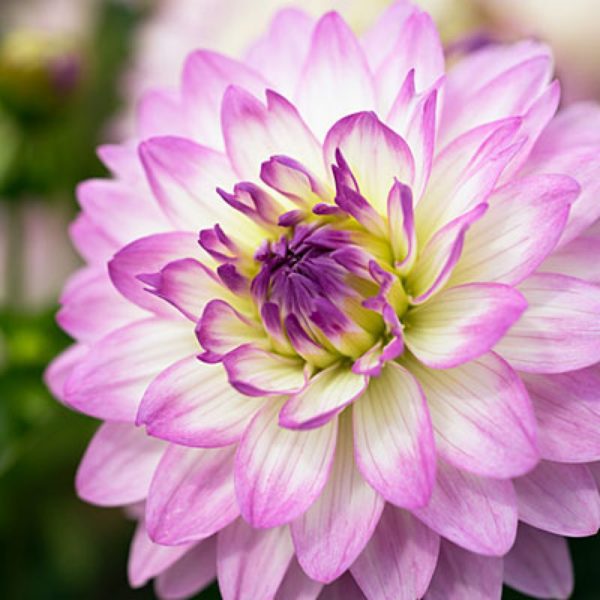
Reed flowers of this group are flat or with slightly raised edges.
- Bahama Red have red petals with white tips. High.
- Meeting - a tall pink flower with a purple center.
- Sugar Kane - orange with white tips petals with raised edges, large baskets and rather high.
- Angela - large pink flowers. Ideal for cutting.
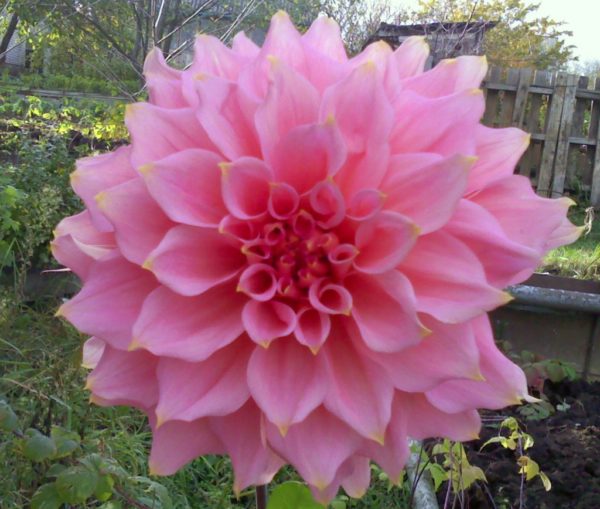
Decorative. One of the most common varieties. It has very large terry inflorescences. They have mainly wide petals with rounded edges.
- Hampley - A variety with a large basket of pink or mauve.
- Tartan - large flowers of cherry-violet color with a white stripe in the middle. Petals are wavy.
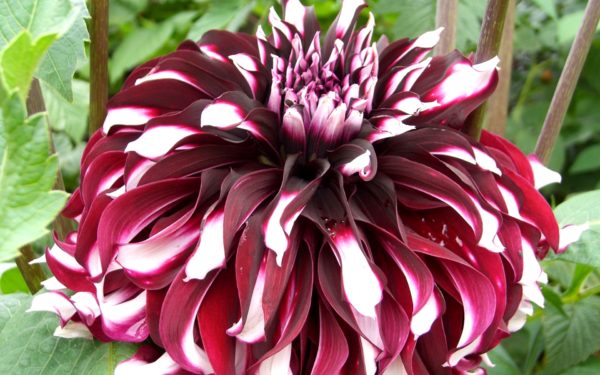
- Lucky Nambre - pink large dahlia.
- Prince carnival - light pink flowers with burgundy specks and strokes.
Spherical and pompom. They have spherical terry flowers from 10 - 15 cm. They bloom profusely from early summer to late autumn.
- Antia - bright red color.
- Aikun- yellow with red edges.
- Rocco - red-violet
- Sylvia - a gentle salmon-orange hue.
- Annushka - lilac.
- Pompoms. Similar to spherical, differences are observed in size.
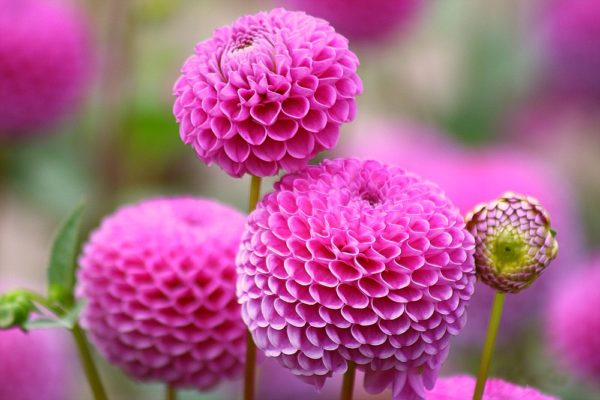
- Acrobat - the variety has dense inflorescences and pink petals folded into a tube.
- Bowling - Orange.
- Anke - red, round inflorescences.
- Andrew Lockwood - pink tight baskets.
Cactus or terry have very large inflorescences up to 25 cm and narrow straight petals with dissected and pointed ends.
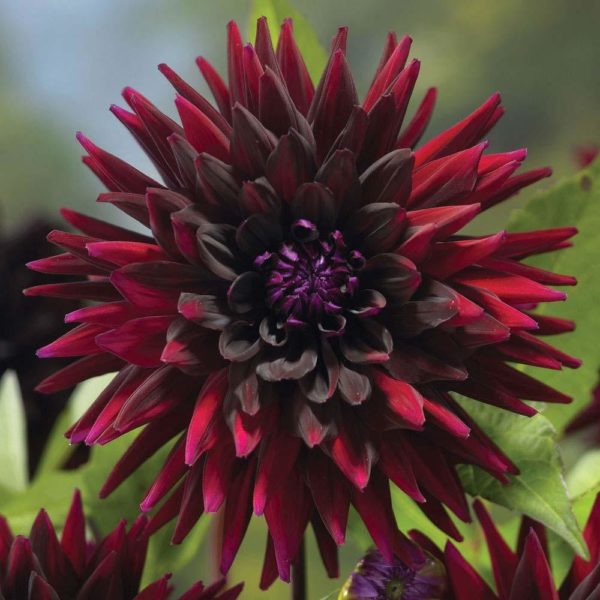
- White star creamy white flowers with needle-shaped curved petals with a diameter of about 20 cm.
- Windhaven Highlight - the plant is tall, with a yellow color and large inflorescence.
- Black bird - a bright red variety with a burgundy middle.
- Jessica - has yellow marginal flowers with red tips.
- Semi-cactus. It is a transitional form from decorative to cactus.
- Aitara Success - painted in a combination of pale pink and light yellow. Refers to medium-sized varieties.
- Adlerstein - high, saturated orange color.
- Ice Princesses - snow-white air and unusually beautiful distances.
- Andrew Mitchell - bright red.
- Anne - delicate peach color.
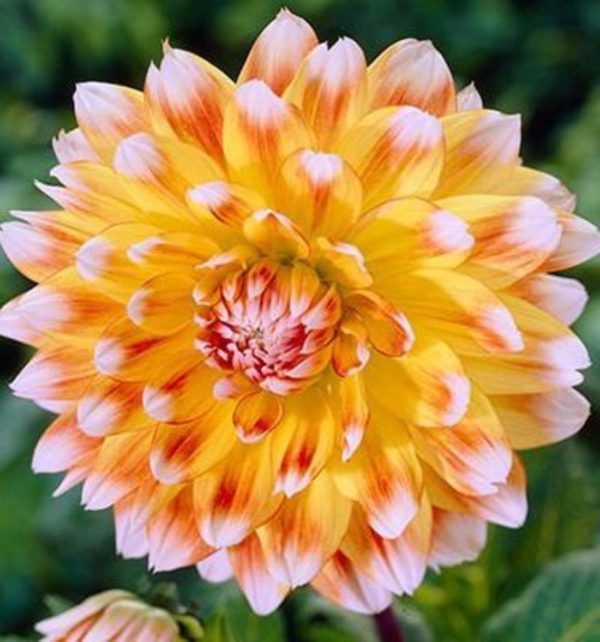
The transitional group includes flowers that are not suitable for other groups.
- Bishop of Llandough - the hallmark is purple leaves and bright red flowers.
- Pink giraffe - unusual pink curved petals.
- Liliput. They are not included in the International Classification, but they cannot be ignored. Most often they are grown as annuals for earlier flowering. This variety is White midget - characterized by a compact bush, white with a yellow center.
- Funny boys - the most common variety. This is a collection of undersized terry, simple dahlias of various colors and shades.
- Giants - the largest dahlia varieties. Inflorescences in diameter reach 25 cm. Such a huge flower makes the plant very heavy, so they are planted in places well protected from the wind.
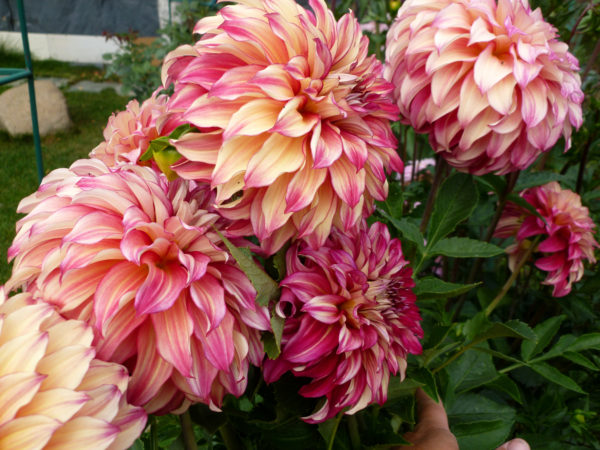
- Tall bush of dahlias Cyber clemens very good for cutting and for flower beds. This is a chameleon flower that changes color during flowering. Among amateur gardeners, large-flowered dahlia varieties are popular as hedges.
Dahlias are the only flower culture in the world with innumerable varieties. It is very difficult to name which varieties are the most beautiful. Each flower is beautiful and unique.

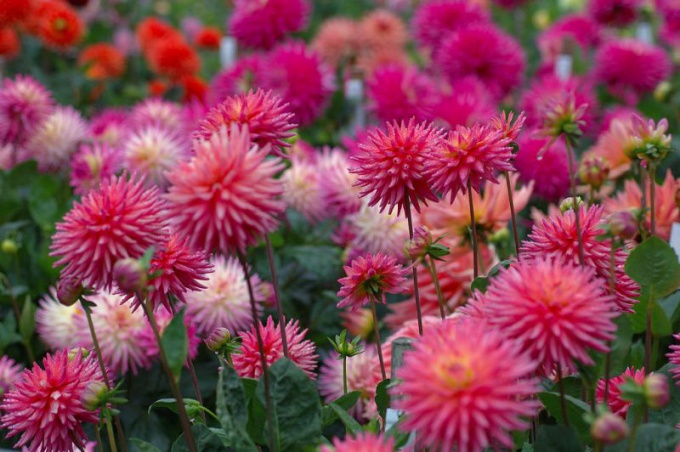

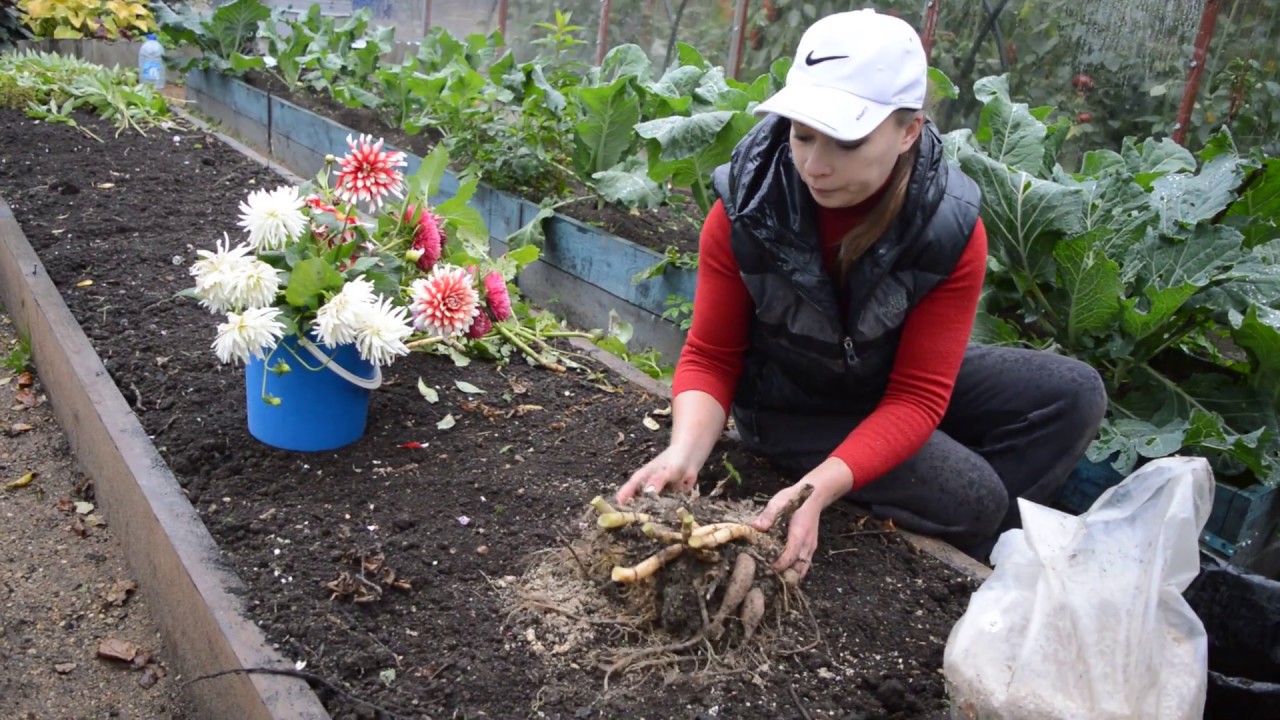
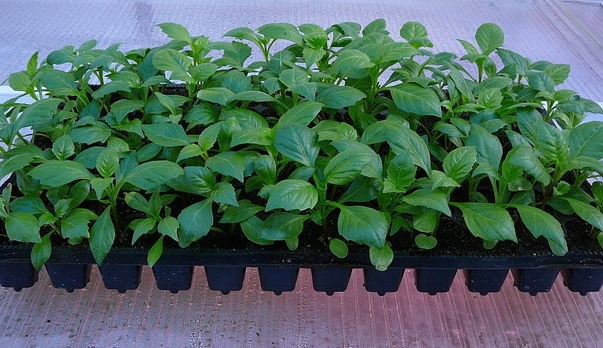 When to plant annual dahlias for seedlings according to the lunar calendar in 2018
When to plant annual dahlias for seedlings according to the lunar calendar in 2018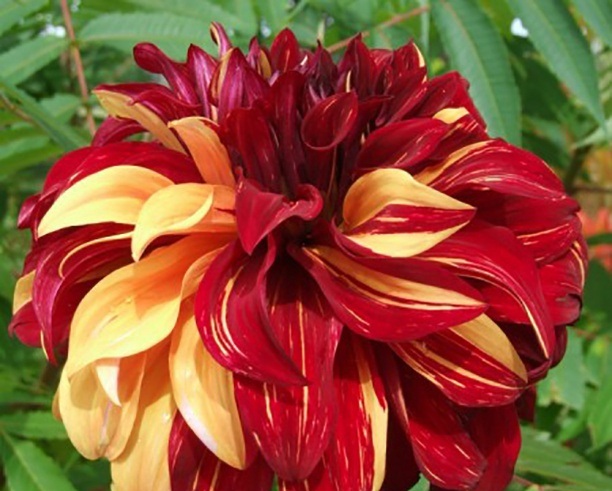 Description of the decorative dahlia "Bohemian Spartacus"
Description of the decorative dahlia "Bohemian Spartacus"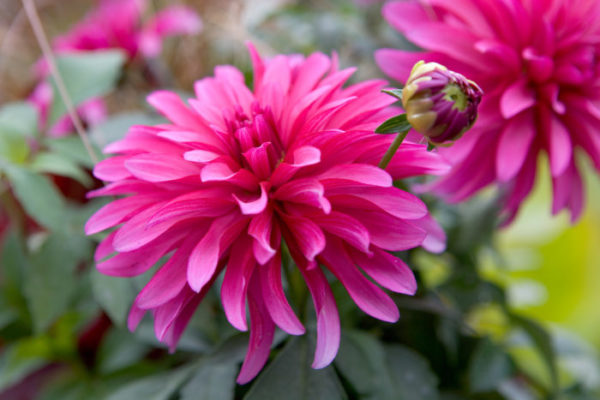 Dahlia Gallery: description of varieties, photo
Dahlia Gallery: description of varieties, photo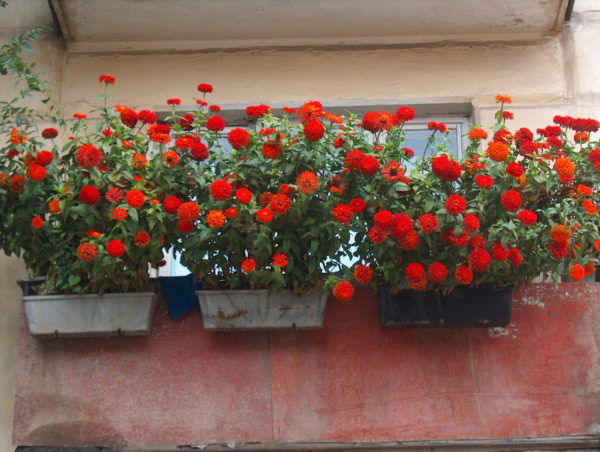 Planting and care of dahlias in pots and on the balcony (photo)
Planting and care of dahlias in pots and on the balcony (photo)